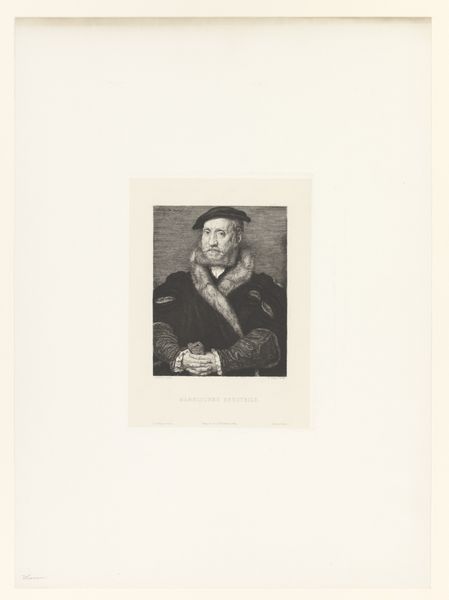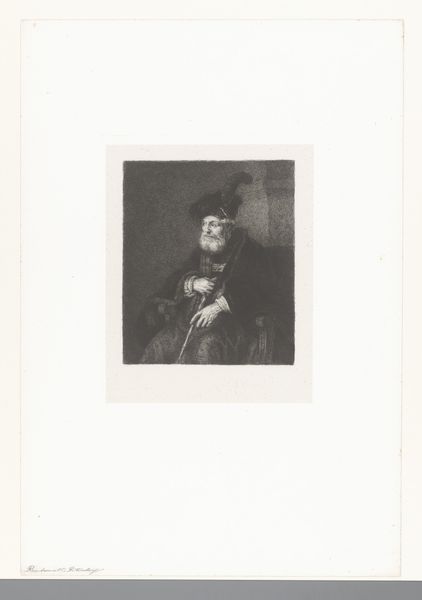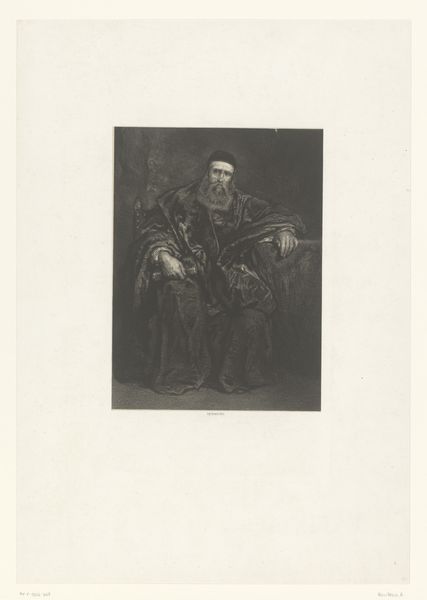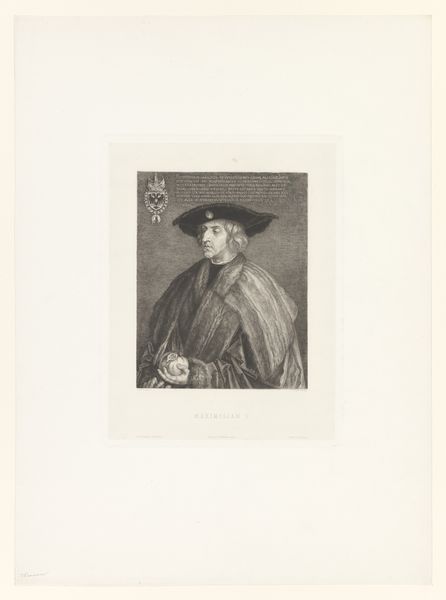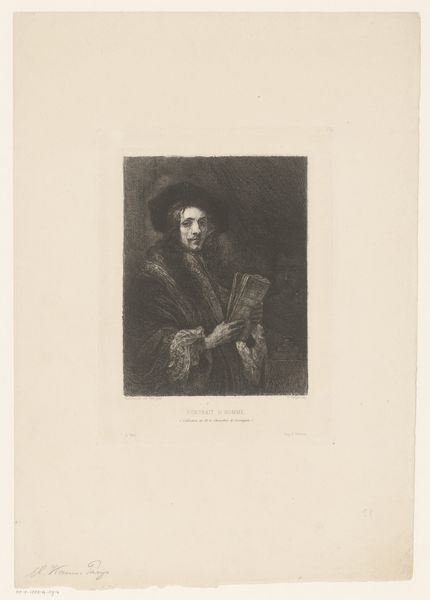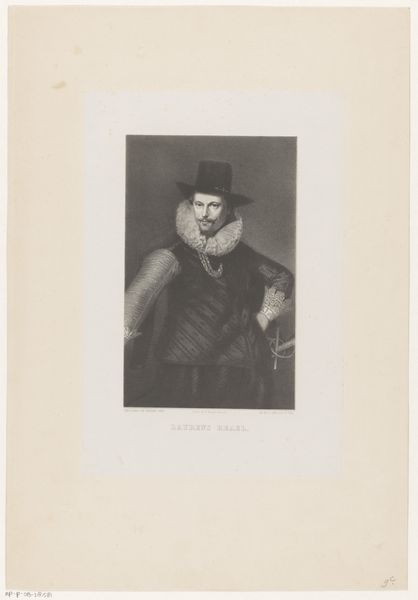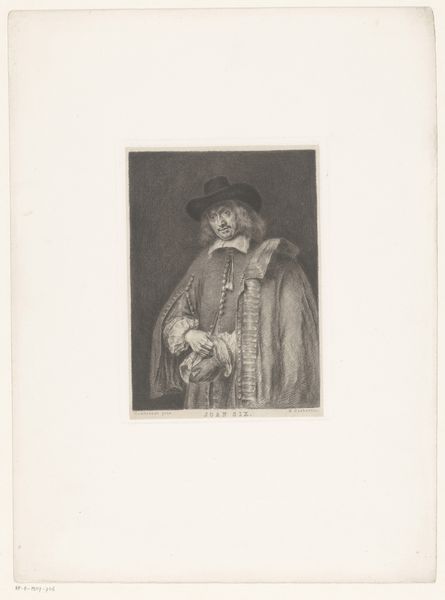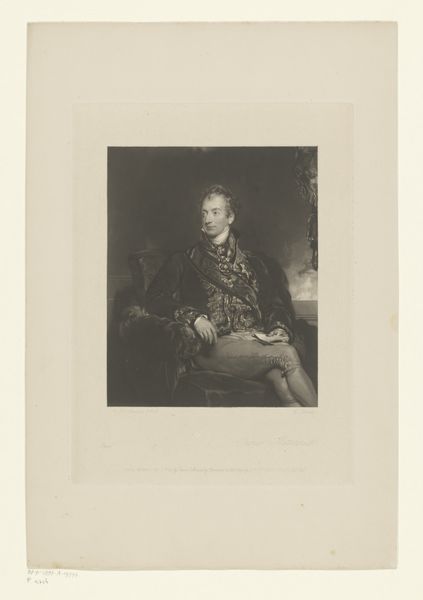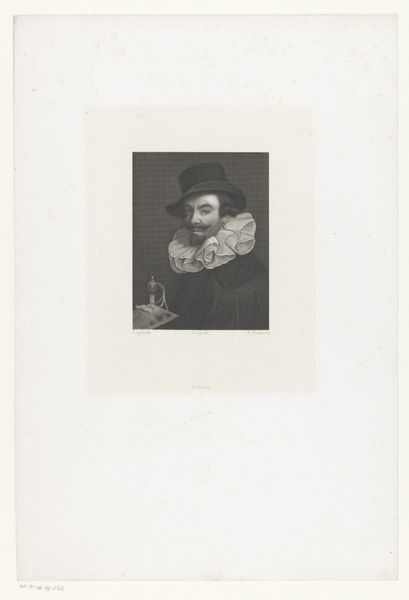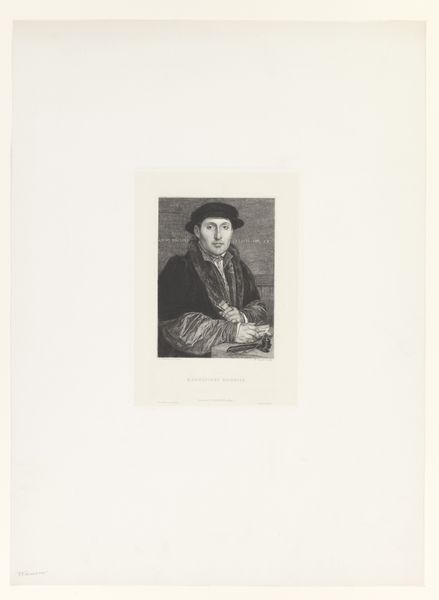
print, engraving
#
portrait
# print
#
history-painting
#
engraving
#
realism
Dimensions: height 316 mm, width 248 mm
Copyright: Rijks Museum: Open Domain
Curator: This striking engraving from sometime between 1861 and 1889 is William Unger's "Portret van Malatesta IV Baglioni," currently residing at the Rijksmuseum. What are your initial thoughts? Editor: Intimidating! He's got that piercing gaze that follows you across the room. You can practically smell the musty velvet and feel the weight of that magnificent, though likely impractical, fur collar. Curator: It does conjure a specific atmosphere. Unger truly captured a sense of gravitas, don’t you think? He chose the engraving medium, a meticulous process to replicate the intricacies of the original portrait, thus enabling wider circulation. It suggests Unger's deep interest in the history that Malatesta embodies, making it more accessible to a broad public through printed media. Editor: The choice of print really shifts the emphasis, doesn’t it? Prints democratized images, taking them from the realm of unique, often aristocratic objects, to something reproducible and potentially mass-produced. We should not underestimate the social and economic forces enabling its dissemination in that era! It really raises questions about Unger's intended audience. Curator: Precisely! Think about the time, too. Realism was taking hold, a push for accuracy, yet there’s a definite romanticism here. He’s clearly choosing to depict a historical figure from a specific, powerful class. It seems to go beyond mere portraiture and attempts to invoke the past, maybe even suggest connections to Unger’s contemporary world. What did power look like then and now? Editor: I wonder what choices governed this work. What determined the texture on his beard, and the light glinting off the doorway? This work emphasizes those fine details created by the tools of production, making evident its materiality. I am more interested in how it’s made, not just whom it represents. I suppose this tension highlights the distinction of the engraving medium—reproducing fine art objects while making its production processes evident! Curator: So, seeing it from your perspective, you see beyond just the depiction of a historical figure to its function as a commodity circulating within certain social and material contexts. Interesting! Editor: It definitely gives me a new lens to examine such conventional, historical subject matter. Curator: And I think you’ve helped me realize the power of accessible art in bringing the grand figures of history into the homes of ordinary people. A thought to take with us, perhaps!
Comments
No comments
Be the first to comment and join the conversation on the ultimate creative platform.
